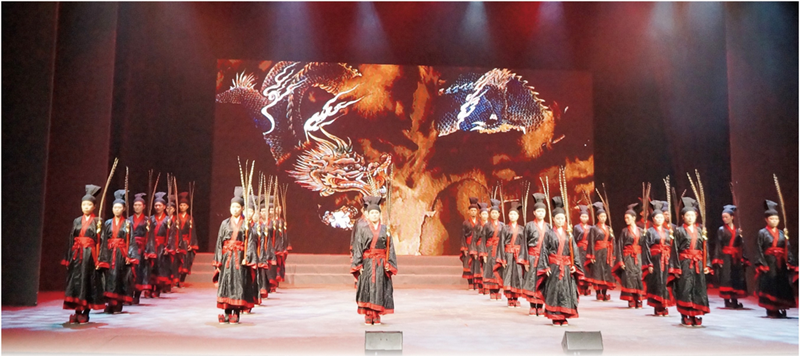
A Yi dance performance. [Photo/fujian-szwhg.chaoxing.com]
Yi dance is the highest-level ritual dance dedicated to foreign dignitaries in ancient China. It was included as a traditional dance in the fifth batch of national-level intangible cultural heritage items.
Yi dance is the core carrier of the traditional Six Arts including poetry, rites, and music, which can be abbreviated as Yi ritual, Yi sacrifice, Yi dance, Da Cheng music dance, or Ya music dance. Its ritual and music system took shape in the Xia Dynasty (c.21st century-16th century BC), developed in the Shang Dynasty (c.16th century-11th century BC), and gradually formed the teaching pattern of the Six Arts.
During the fourth year of the Zhenghe reign of the Northern Song Dynasty (960-1127), Da Cheng musical work, compiled and presided over by Liu Xian from Fuqing county in Fujian province, as the orthodox national music. During the Qing Dynasty (1644-1911), it was included in the Complete Library in Four Sections, becoming one of the few types of Chinese ritual music to survive to this day.
Through practicing Yi dance, people can be guided to establish correct aspirations and cultivate and establish good character qualities. The instruments used include various types of musical instruments such as pipa, bamboo flute, and drums.

Copyright © General Office of Fujian Provincial People's Government
Website Identification Code 3500000049Registration Number: 15003084
All rights reserved. The content (including but not limited to text, photo, multimedia information, etc) published in this site belongs to fujian.gov.cn.
Without written authorization from fujian.gov.cn, such content shall not be republished or used in any form.